2021 SMART Virtual Events
February 4, 2022
SMART Remediation talks have focused on innovative technologies for remediating contaminated sites, approaches for site characterization, project case studies, regulatory and industry perspectives, and other related topics.

The 32nd to 35th SMART Remediation conferences were held virtually on February 4th, 11th, 18th and 25th, 2021. Details on the speakers and presentations are provided below.
Speakers

Marc McAree,
Willms & Shier Environmental Lawyers LLP
At the Intersection of Environmental Science and Liability: How do you Manage your Professional Practice?
- Bio |
- Abstract
- | Presentation
Marc McAree
Marc assists clients to manage environmental risks and liabilities while limiting clients’ reputational risk. Marc brings significant environmental law expertise to: contaminated land/brownfields clean ups, environmental-aspects of transactions, environmental insurance, all manner of environmental compliance, environmental approval and order appeals, and defence of environmental prosecutions and environmental civil actions. Marc is recognized for his excellence in advocating for clients in environmental civil litigation at all levels of Ontario Courts, defence of clients against environmental regulatory prosecutions, and appearances before Ontario’s Environmental Review Tribunal and other administrative decision-makers on appeals and at hearings. Marc has particular experience prosecuting and defending contaminated land claims and nuisance impacts including odour, noise and light, and also in defending civil actions brought against environmental consultants. Marc is named in the 2021 Lexpert™®/American Lawyer Guide To The Leading 500 Lawyers in Canada. Marc was peer selected and named the Best Lawyers’® 2019 Environmental Lawyer of the Year (Toronto). He is peer selected annually for inclusion in The Best Lawyers in Canada© for environmental law. Marc is ranked “Most Frequently Recommended” by The Canadian Legal Lexpert® directory and ranked “AV® Preeminent™” by peers in Martindale-Hubbell. He is ranked as a Global Leader in Who’s Who Legal Environment and ranked as a National Leader in Who’s Who Legal Canada Environment. Marc is called to the bar in Ontario and British Columbia. He obtained a joint Bachelor of Laws/Masters in Environmental Studies at York University. Willms & Shier Environmental Lawyers LLP is named “Law Firm of the Year” for Environmental Law in the Best Lawyers in Canada, 2021 Edition!
At the Intersection of Environmental Science and Liability: How do you Manage your Professional Practice?
Environmental consultants work at the unique intersection of environmental science and liability. Consultants are facing greater scrutiny in the work they do for clients; scrutiny comes from both the consultant’s clients and from regulators. Consultants are being sued in civil lawsuits for negligence and breach of contract. Consultants are being prosecuted for environmental statutory offences. Professional bodies have also become more active in responding to complaints against professionals and in reviewing professional misconduct. Because of this, you might be wondering whether you could be sued or prosecuted and how to mitigate your own risk of getting entangled in legal proceedings! Willms & Shier Environmental Lawyers will provide guidance for consultants on how best to manage their own exposure to liability that flows from the work that consultants do. During this session, our lawyers will review with you the basics about environmental legal issues facing consultants, including civil causes of action, environmental regulatory offences, and professional obligations. We will also delve into the most notable flash points that our firm’s lawyers see in our practice and through court, tribunal and disciplinary proceedings.
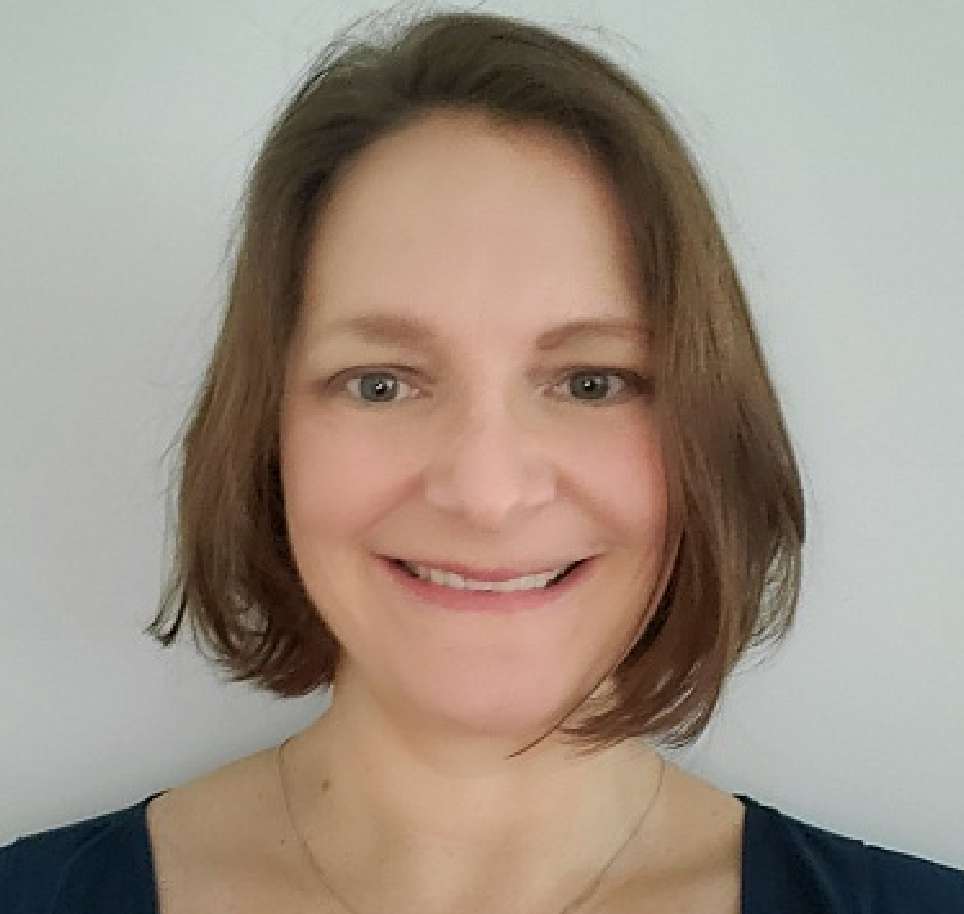
Laura Jones,
Golder Associates
Triad-approach (LIF/MIP/MWs/SVPs) for LNAPL and PHC delineation at a Fuel Station on Pelee Island
- Bio |
- Abstract
- | Presentation
Laura Jones
Laura Jones is an Environmental Engineer with over seven years of consulting experience related to the completion of environmental site assessments including advanced characterization methods, groundwater monitoring programs, spill response, tank pulls and soil/groundwater remediation. Laura holds a B.A.Sc. in Environmental Engineering and an M.A.Sc. in Civil Engineering, both from the University of Waterloo. Her research at the University of Waterloo was on the characterization of aquifer materials to determine suitability for in situ chemical oxidation with permanganate.
Triad-approach (LIF/MIP/MWs/SVPs) for LNAPL and PHC delineation at a Fuel Station on Pelee Island
A multifaceted site investigation was conducted in 2018 at a long-term fueling (gasoline and diesel) storage and transfer facility at Pelee Island, Canada to better understand the nature and extent of petroleum hydrocarbon (PHC) impacts, assess potential risks and guide the next steps for site remediation. The site investigation activities were completed over a 6-day period and consisted of using a triad-approach based on various tools including Laser Induced Fluorescence (LIF), Membrane Interface Probe (MIP), installation of sentinel/delineation wells and soil vapour probes/implants. Between September 28 and October 4, 2018, (i) 41 locations were investigated using LIF to define the extent of LNAPL, (ii) 14 locations were investigated using MIP to infer the extent of dissolved phase PHC impacts, (iii) 6 boreholes completed as monitoring wells were advanced along the perimeter of the zone of PHC impacts to act as sentinel/delineation monitoring points, and (iv) 5 soil vapour pins/implants were installed to assess potential vapour intrusion risks to nearby buildings. Funding for this project was received from Federation of Canadian Municipalities’ Green Municipal Fund with the support of the Township of Pelee.

Jean Paré,,
Chemco inc.
Technology Update & Review - Activated Carbon for Contaminant Control and Site Remediation
- Bio |
- Abstract
- | Presentation
Jean Paré,
Jean Pare, P.Eng., has a degree in Chemical Engineering from Laval University. He has been involved for the last 22 years in the evaluation, development, design, and promotion of both conventional and innovative environmental technologies. As Vice President with Chemco Inc., his responsibilities include the remediation design, technico-economical analysis and technology supply for chemical oxidation and reduction, soil washing, and enhanced bio-remediation. Last year, he worked with over 400 sites applying his expertise to various types of organic and inorganic contaminants in soil and groundwater. He is also involved with many environmental organizations such as CLRA, CBN, ESAA, BCEIA and Reseau-Environnement where he is an active technical committee member and regular technical speaker.
Technology Update & Review - Activated Carbon for Contaminant Control and Site Remediation
The use of in situ amendment for the remediation of contaminated soil and/or groundwater has been progressing largely over the last 20 years. These technologies have proven efficiency and their applicability range is well understood. They are well suited to address a wide range of contaminants including petroleum products, creosotes, aromatic hydrocarbons, chlorinated solvents and even metals. However, the technologies must be used properly to be effective. If their limitations are not fully understood, they are likely to be misused, resulting in disappointing results. This presentation will review the principles around the use of activated carbon and how they can be used to remediate organic contaminants in soil & groundwater. We will also cover the application field, drawback and limitations of the technology. A few real life case studies will allow the attendees to identify some of the major considerations in screening, selecting, designing, implementing, and monitoring a full scale treatment project.
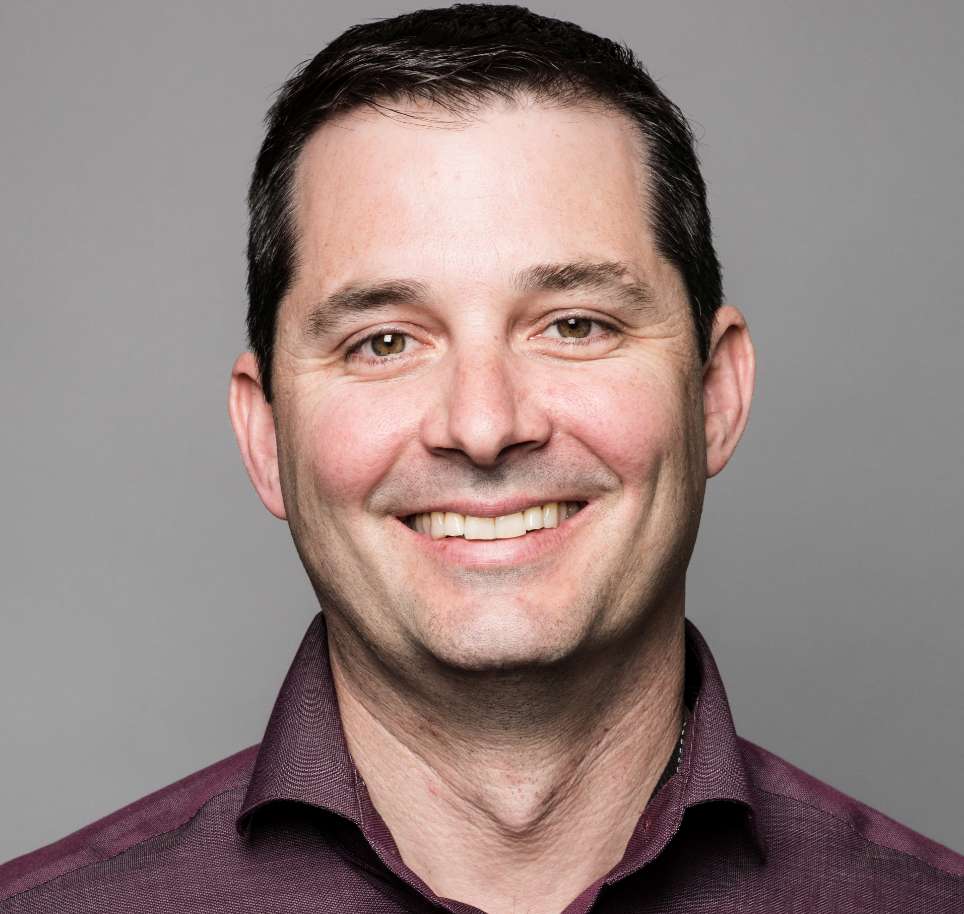
David Bertrand,
Geosyntec Consultants International Inc.
Waterfront Toronto – Risk Management Measures for the New River Valley
- Bio |
- Abstract
- | Presentation
David Bertrand
David Bertrand is a Principal at Geosyntec Consultants. He is a hydrogeologist with over 20 years of experience in environmental consulting, brownfield redevelopment, waterfront revitalization, investigation and remediation of sites with recalcitrant contaminants, and vapour intrusion assessment and mitigation.
Waterfront Toronto – Risk Management Measures for the New River Valley
You have been retained by an environmental litigator to help decipher the technical aspects of an environmental legal dispute. Now what? What are your duties as an expert, and to whom do experts owe those duties? What types of communications should you expect with legal counsel and the party retaining you? What does it mean to be independent and impartial, and do you evidence this? What are the four corners of your area of expertise, and how do you and why should you stay within those four corners? And, is your work subject to legal privilege and what is privilege anyway? Join Willms & Shier Environmental Lawyers as we dissect these and other aspects of a litigation experts’ duties as defined in law, the Courts, and as required by the Rules of Civil Procedure and Rules of Professional Conduct. We will look at the nature of an expert’s role, the expected relationship between counsel and experts, if, when and how far privilege extends over communications with experts and experts’ reports, the Court’s gatekeeping function in admitting or excluding your evidence, the admissibility and weight to be given to your expert evidence, and how to establish and maintain an expert’s credibility before and at trial.
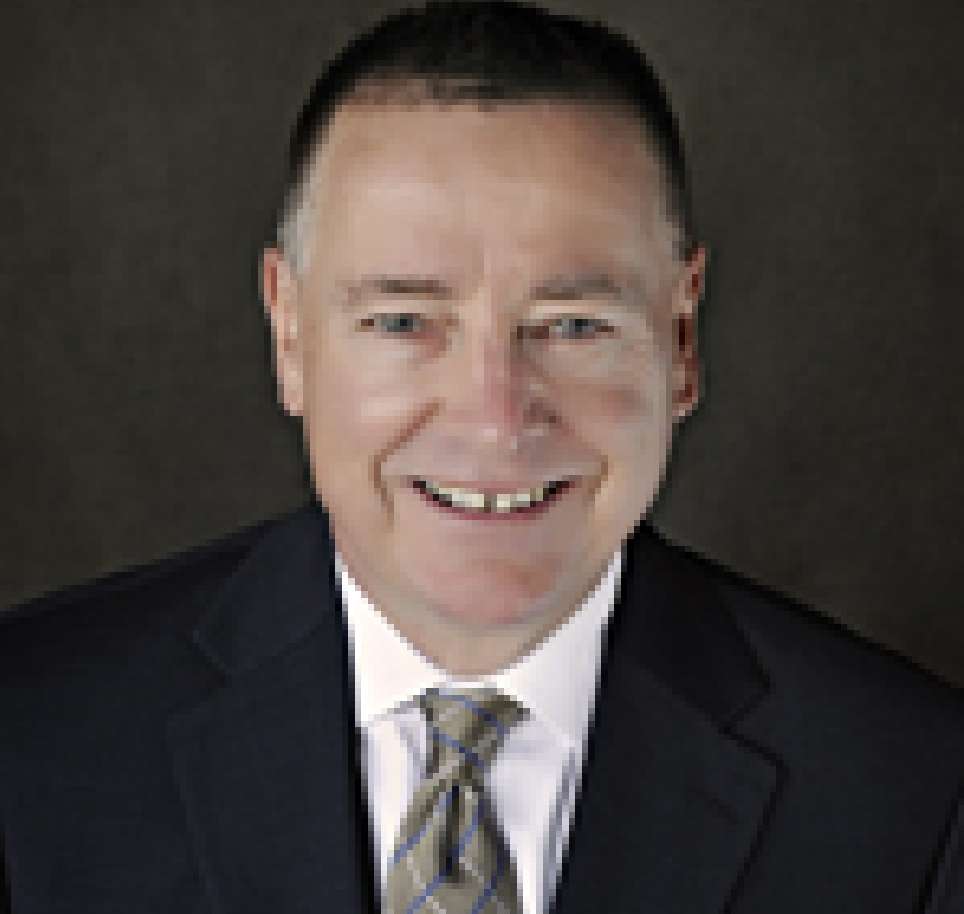
Michael Hebert,
Mann Lawyers, LLP
New Excess Soil Regulations and Reasonableness of Damages
- Bio |
- Abstract
- | Presentation
Michael Hebert
Michael Hebert is one of the leading Environmental Law lawyers in Canada. His visionary work as the Plaintiff’s counsel in Tridan v. Shell, 2002 Carswell, Ont 1, 154 O.A.C. 1, 57 O.R. (3d) 503, a benchmark decision of the Ontario Court of Appeal radically changed the face of environmental law and the assistance it afforded to victims of environmental damage. This case established three leading principles which govern compensation and are today followed by Courts throughout Ontario and the rest of Canada. Michael’s work following that decision has continued to demonstrate a careful and innovative approach to environmental claims. He also provides ongoing consulting to all interested parties dealing with contaminated land, as well as consulting and advocacy in relation to regulatory and compliance matters under applicable environmental legislation. Michael has been appointed to the Executive of the National Environmental, Energy and Resources Law Section of the Canadian Bar Association. He also assists the Environmental Law Section of the Ontario Bar Association. Michael was born in Ottawa and obtained a B.A. Cum Laude in Economics from Carleton University. He also graduated Cum Laude from the University of Ottawa Law School in 1977. He was called to the Bar of Ontario in 1979 and joined the Beament firm in 1985. In addition to his environmental practice, Michael maintains a broad base of commercial litigation including corporate, construction, contractual, real estate and financial matters. He continues to advise public and private organizations in risk management relating to ongoing liabilities arising out of large and complex commercial and environmental matters. Michael is a member of the Advocates’ Society and has been an instructor at the Bar Admission Course. He has delivered many papers to professional associations within his areas of expertise.
New Excess Soil Regulations and Reasonableness of Damages
In spite of all of the differences of opinion on environmental issues and law, there is no doubt on the question that for damages regarding contaminated lands to be recoverable from a polluter, they must be reasonable. This proposition was established in my case Tridan Developments Ltd. v. Shell Canada Products Ltd., 2002, CanLII 20789 (ON C.A.), over 20 years ago. While this proposition seems like a settled prospect, the advent of in situ treatment of contaminated soils is going to be one that will need to be paid attention to by both counsel for injured plaintiffs and engineers propounding remediation strategies. Whereas up to this point, in a situation where “dig and dump” strategy was proposed, it was simply a matter of removing contaminated soils and, where they contained contamination, they were taken to a landfill at considerable cost and expense. Now, with the upcoming advent of soil treatment on site, the methodologies for treating contaminated soils is going to evolve considerably. New rules concerning on site treatment of soils or for their transportation to another location will change the landscape considerably for the treatment, use and disposal of contaminated soils. The most important aspect of this issue ties back with the concept of reasonableness of damages. It is extremely likely that all plaintiffs proposing that the soils on their sites be remediated will be required to follow the most reasonable and least costly method of achieving such remediation. It seems clear that a failure to do so could well be the subject matter of a denial or reduction of a damage claim for the cost of soil remediation, where the cheapest and easiest way was not employed. Environmental experts and their counsel will need to pay attention to this important criteria or risk having their clients claim not recoverable in whole or in part because of the failure to follow this new procedure. This presentation will focus on the framework for this rule and its likely implementation in the future given the inevitable enactment of excess soils regulation. We will look at how this regime will be an important issue for consultants to deal with where they are seeking to recover soil remediation costs from polluters. It is important for landowners, developers and environmental consultants to have a firm grasp of these concepts when advising clients on soil remediation approaches and strategy.
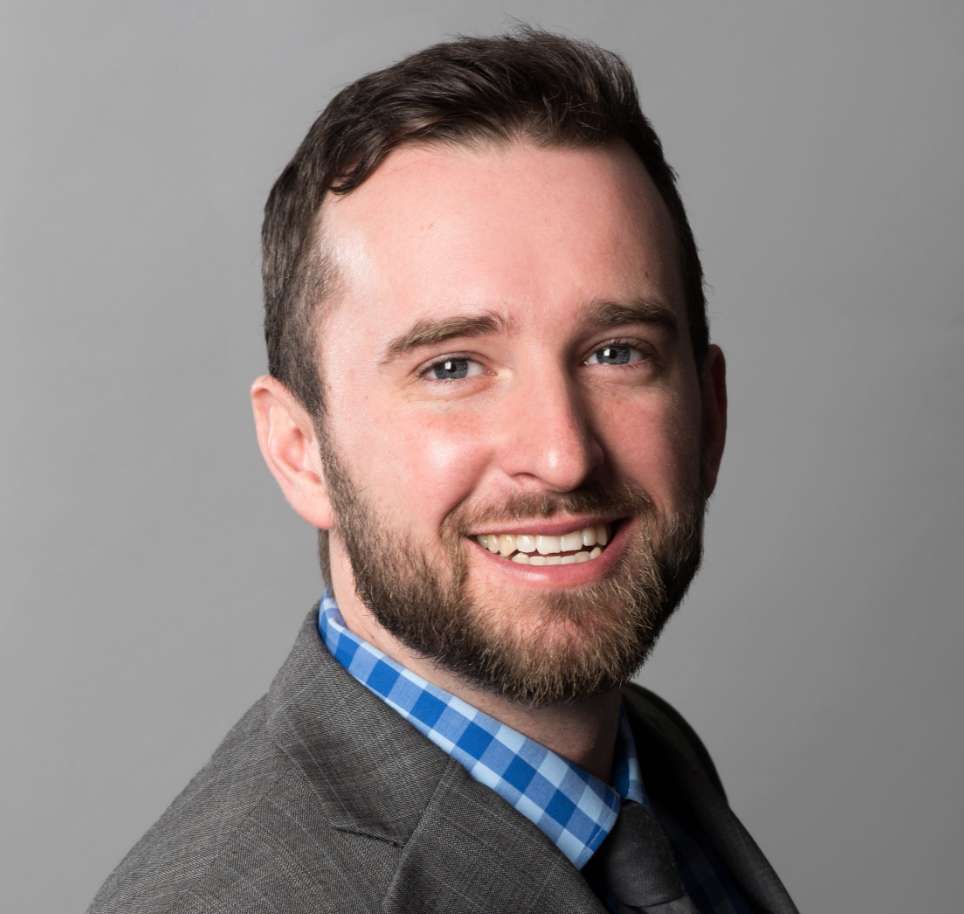
Dave Liefl,
Savron Solutions
Ex Situ Smoldering Combustion (STARx): Treatment of Contaminated Soils at the Port Lands Flood Protection and Enabling Infrastructure (PLFPEI) Project
- Bio |
- Abstract
- | Presentation
Dave Liefl
Dave Liefl, P.Eng., is a project engineer with Savron with more than 10 years of experience in the field of environmental remediation and the development and implementation of the Self-sustaining Treatment for Active Remediation (STAR) technology. Mr. Liefl has been involved in the design, implementation and operations of numerous remediation projects while working with Geosyntec and joined Savron in 2015 to focus on the development of STAR/STARx. Mr. Liefl is a member of the Geosyntec Joint Health and Safety Committee and Research and Development Committee.
Ex Situ Smoldering Combustion (STARx): Treatment of Contaminated Soils at the Port Lands Flood Protection and Enabling Infrastructure (PLFPEI) Project
Smoldering combustion is a low-cost, energy efficient thermal technique for the treatment of contaminated soils. This approach is commercially available as the STAR (in situ) and STARx (ex-situ) technologies and has traditionally been used for the treatment of heavy hydrocarbons. For these contaminants, the smoldering reaction propagates in a self-sustaining manner following a short duration, low energy input ‘ignition event’ as the energy released from the reacting contaminants is used to pre-heat and combust contaminants in adjacent areas, provided that a sufficient flux of air is supplied. The Port Lands Flood Protection and Enabling Infrastructure (PLFPEI) Project is a megaproject, the largest current waterfront redevelopment project in North America, valued at well over $1B. The project includes the construction of a new kilometer-long river valley and new mouth for the Don River, protecting almost 300 hectares of waterfront land from flooding. By completing various excavation and civil engineering tasks, the project will restore and repurpose legacy industrial sites while installing infrastructure to support redevelopment and future growth of the Toronto Port Lands. Materials excavated from the new Don River mouth (as well as from other sources supporting the overall redevelopment) display a range of contamination from historical industrial practices at and around the Site. A large proportion of contaminated soils are to be treated and reused on Site to support Waterfront Toronto sustainability targets. In 2020, QM Environmental, teaming with Savron, was awarded a contract by the site Construction Manager, Ellis Don, to treat a minimum of 75,000 m3 of hydrocarbon contaminated soils via the largest STARx treatment Plant constructed to date. The STARx plant consists of four HP-250 Base Systems with a treatment capacity of approximately 1000 m3 per week. The STARx plant is currently under construction and slated to begin treating Site soils in January 2021. Plant construction has been undertaken by QM Environmental and Savron with support from various subcontractors. The presentation will focus on STARx plant design, construction and commissioning and conclude with a review of operational principles and procedures that will be utilized during the active operation portion of the project. In addition, available operational data will be presented illustrating the effectiveness of the STARx technology for treating hydrocarbon-impacted soils at the site.
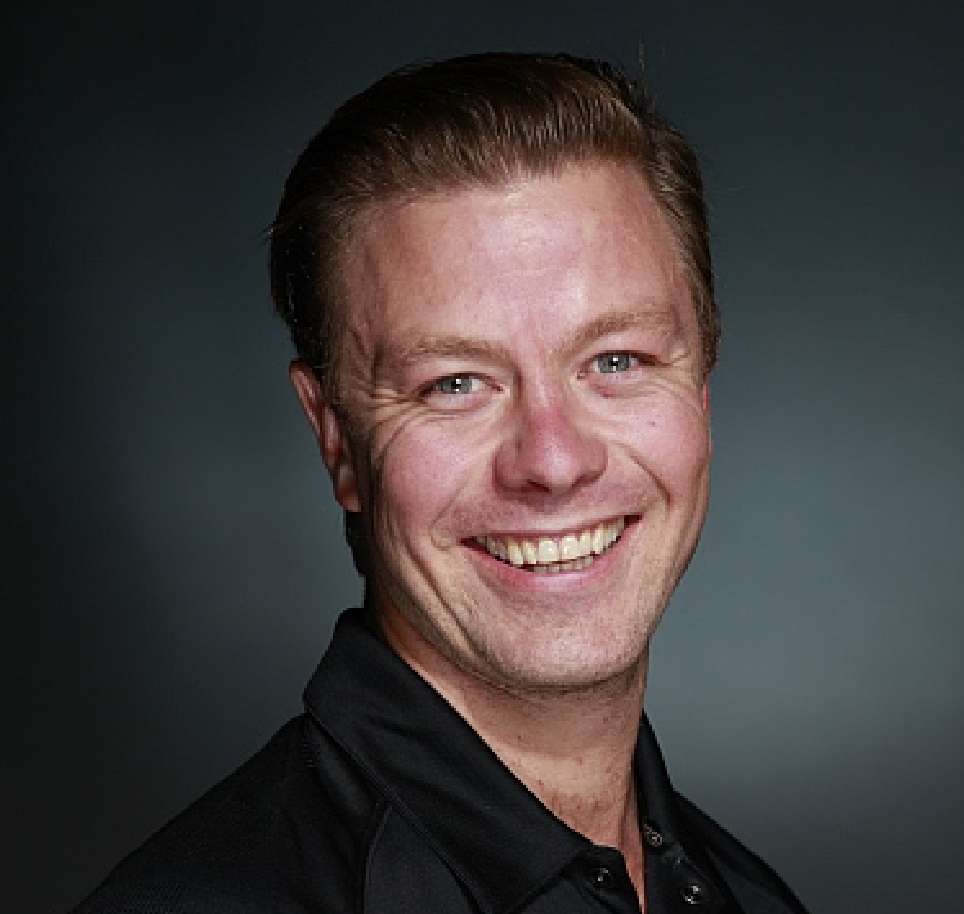
Robert Lacey,
Delta Remediation Inc. (Dominion Diamond Mines)
CO-PRESENTING: Successful Bioremediation of Long Chain Hydrocarbons in the Arctic
- Bio |
- Abstract
- | Presentation
Robert Lacey
Robert Lacey is the Founder and President of Delta Remediation. From an early age, Robert has been mindful of both economic opportunities and environmental sustainability. Through innovation and cooperation, Robert has developed strategies to handle waste streams and pollution at the source. With a background in Construction, Industrial Recycling, and Waste Management, Robert’s focus has been in creating business transactions with a high value proposition for both the company and the client, but at no expense to the environment or society. It is Robert’s personal goal to leave the environment better than we found it.
CO-PRESENTING: Successful Bioremediation of Long Chain Hydrocarbons in the Arctic
Located near Lac de Gras within the Northwest Territories, Canada approximately 300 km north of Yellowknife and roughly 200 km south of the Arctic Circle. The Dominion Diamonds mine is only accessible by air, except for a brief period of annual winter road access. This remote nature of the mine provides many logistical challenges, specifically when it comes to limited timeframes to remove waste materials from the site and the high costs associated with trucking materials and offsite remediation. These high costs associated with winter road utilization and off-site remediation to remove and remediate materials from the remote mine have led to the decision to look for innovative in-situ alternative solutions to soil remediation as a form of progressive reclamation and sound operational management. Bioremediation of hydrocarbon impacted soils through microbial augmentation has the potential to be a cost-effective in-situ remedial method to return materials back to within CCME Agricultural Guidelines that are required for the Dominion Diamond Mine. Microbial metabolism of hydrocarbons has been proven on thousands of sites under various conditions, however typical environments have warmer temperatures that provide quicker metabolization of hydrocarbons. It is also understood that soils maintaining 10-20% moisture by weight encourages healthy microbial communities for bioremediation. With the Arctic being both cold and dry, this was a novel approach to a complex challenge (potentially the first of its’ kind in the Arctic). The Landfarm Bioremediation Project included a trial run in partnership with Delta Remediation. In June 2018, the initial trial has included 1400 m3 of hydrocarbon impacted (F2-F4) materials being treated with a BioLogix technology to attempt to meet CCME Agricultural Guidelines. Soil sampling was undertaken prior to and after the bioremediation process. By September 2019, the BioLogix treatment had proved to reduce all petroleum hydrocarbon fractions. By September 2019 F1, F2, and F4 fractions were all able to meet CCME Agricultural Surface Soil Guidelines. F3 fractions were also proven to degrade with ranges of contamination ranging from 3120-8070 mg/kg before treatment and 1630-1880 mg/kg by September of 2019 In this timeframe, the microbes effectively degraded all fractions to the point that the entire trial windrow passes CCME Agricultural Subsoil Guidelines. This level of degradation meant that the entire trial windrow was able to be removed from the landfarm facility without the need to haul offsite. This has proven that the bioremediation processes associated with the microbial degradation of hydrocarbons can be an effective method for treating hydrocarbon impacted soils within landfarm facilities within the Canadian Arctic. Given that the material no longer requires to be transported offsite there are also significant reductions to the amount of carbon emissions released into the atmosphere. Considering that to transport 1000 m3 of hydrocarbon impacted soils offsite via the winter road would require 42 round trips from Yellowknife to Ekati approximately 672 running hours of diesel semi-trucks has been avoided. Therefore, with the successful completion of onsite bioremediation a total of 69,888 m3 of carbon emissions was saved from entering the atmosphere, just for a 1000 m3 trial.
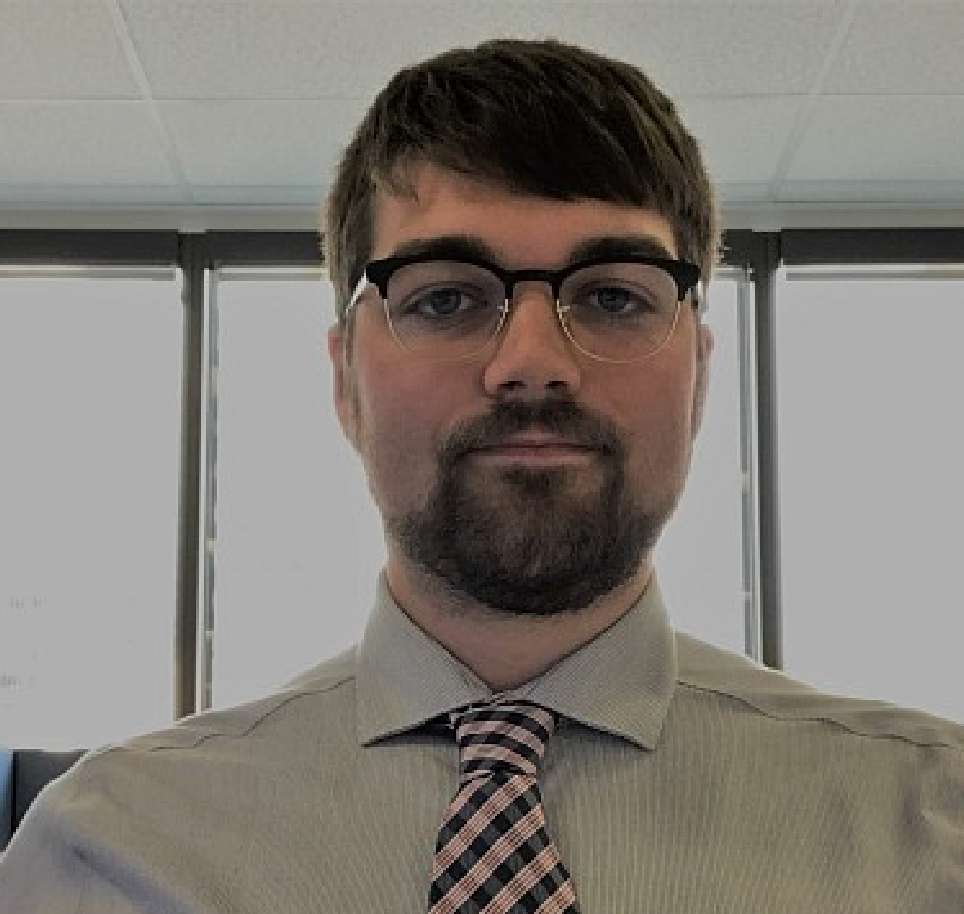
Kurtis Trefry,
Delta Remediation (Dominion Diamonds)
CO-PRESENTING: Successful Bioremediation of Long Chain Hydrocarbons in the Arctic
- Bio |
- Abstract
- | Presentation
Kurtis Trefry
Kurtis Trefry is a Reclamation Specialist at Dominion Diamond Mines focussing on mine closure planning and the management of progressive reclamation projects for the Ekati Diamond Mine. Kurtis’ primary focus is finding outside the box solutions to complicated environmental problems through the management of various reclamation research programs. Key examples of these innovative programs include research with a focus on stabilizing processed kimberlite tailings in northern environments through a combination of vegetation and rock as well as the utilization bioremediation practices to manage potentially contaminated materials within the Ekati landfarm.
CO-PRESENTING: Successful Bioremediation of Long Chain Hydrocarbons in the Arctic
Located near Lac de Gras within the Northwest Territories, Canada approximately 300 km north of Yellowknife and roughly 200 km south of the Arctic Circle. The Dominion Diamonds mine is only accessible by air, except for a brief period of annual winter road access. This remote nature of the mine provides many logistical challenges, specifically when it comes to limited timeframes to remove waste materials from the site and the high costs associated with trucking materials and offsite remediation. These high costs associated with winter road utilization and off-site remediation to remove and remediate materials from the remote mine have led to the decision to look for innovative in-situ alternative solutions to soil remediation as a form of progressive reclamation and sound operational management. Bioremediation of hydrocarbon impacted soils through microbial augmentation has the potential to be a cost-effective in-situ remedial method to return materials back to within CCME Agricultural Guidelines that are required for the Dominion Diamond Mine. Microbial metabolism of hydrocarbons has been proven on thousands of sites under various conditions, however typical environments have warmer temperatures that provide quicker metabolization of hydrocarbons. It is also understood that soils maintaining 10-20% moisture by weight encourages healthy microbial communities for bioremediation. With the Arctic being both cold and dry, this was a novel approach to a complex challenge (potentially the first of its’ kind in the Arctic). The Landfarm Bioremediation Project included a trial run in partnership with Delta Remediation. In June 2018, the initial trial has included 1400 m3 of hydrocarbon impacted (F2-F4) materials being treated with a BioLogix technology to attempt to meet CCME Agricultural Guidelines. Soil sampling was undertaken prior to and after the bioremediation process. By September 2019, the BioLogix treatment had proved to reduce all petroleum hydrocarbon fractions. By September 2019 F1, F2, and F4 fractions were all able to meet CCME Agricultural Surface Soil Guidelines. F3 fractions were also proven to degrade with ranges of contamination ranging from 3120-8070 mg/kg before treatment and 1630-1880 mg/kg by September of 2019 In this timeframe, the microbes effectively degraded all fractions to the point that the entire trial windrow passes CCME Agricultural Subsoil Guidelines. This level of degradation meant that the entire trial windrow was able to be removed from the landfarm facility without the need to haul offsite. This has proven that the bioremediation processes associated with the microbial degradation of hydrocarbons can be an effective method for treating hydrocarbon impacted soils within landfarm facilities within the Canadian Arctic. Given that the material no longer requires to be transported offsite there are also significant reductions to the amount of carbon emissions released into the atmosphere. Considering that to transport 1000 m3 of hydrocarbon impacted soils offsite via the winter road would require 42 round trips from Yellowknife to Ekati approximately 672 running hours of diesel semi-trucks has been avoided. Therefore, with the successful completion of onsite bioremediation a total of 69,888 m3 of carbon emissions was saved from entering the atmosphere, just for a 1000 m3 trial.
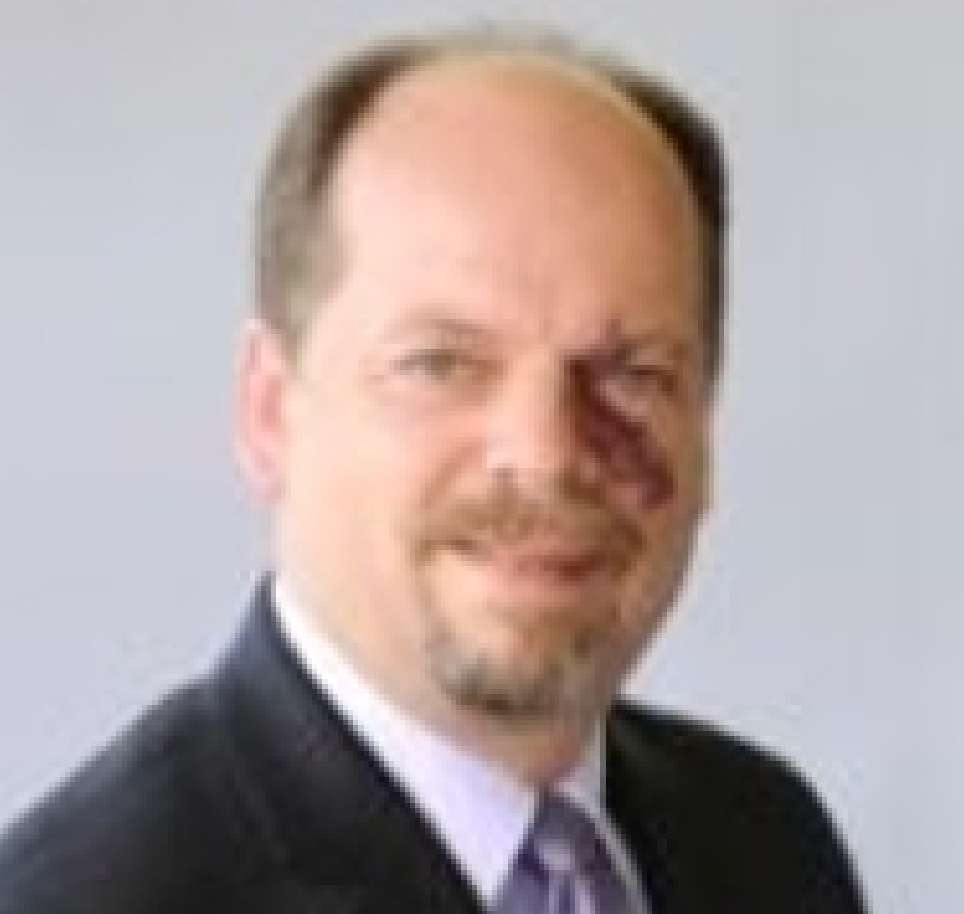
Taras (Terry) Obal,
Bureau Veritas
PFAS, Total Organic Precursors (TOPs) and Total Organic Fluorine (TOF): “What’s the difference and when to use one over the other?”
- Bio |
- Abstract
- | Presentation
Taras (Terry) Obal
Dr. Terry Obal is Chief Science Advisor at Bureau Veritas Laboratories. Terry’s mandate is to ensure that good science and its value are fully available to our customers, regulators and the public by providing technical representation, consultative support and expert opinions for Bureau Veritas clients. Dr. Obal has been integral in the development and commercialization of robust, reliable and defensible methods for the determination of per-and polyfluorinated alkyl substances (PFAS). He is frequently called upon by key environmental stakeholders in the United States and Canada to provide scientific input and expertise on PFAS. Terry has over 30 years of experience in analytical chemistry, laboratory management and environmental chemical consulting. He is currently: Chair of the Board of Directors of the Ontario Environmental Industry Association (ONEIA); Vice-Chair of the Federation of Canada’s Professional Chemists (FCPC); and is an Ontario Chartered Chemist (C.Chem.) through the Association of the Chemical Profession of Ontario (ACPO).
PFAS, Total Organic Precursors (TOPs) and Total Organic Fluorine (TOF): “What’s the difference and when to use one over the other?”
Over the past ten years, there has been an extraordinary amount of attention focused on perfluorooctane sulfonic acid (PFOS), perfluorooctanoic acid (PFOA) and related per- and polyfluorinated alkyl substances (PFAS), particularly with respect to their characterization, delineation, management and regulation in the environment. Environmental stakeholders are continually developing a better understanding of: occurrence, exposure and toxicity; proper sampling and analysis protocols; and remedial options. From an analytical standpoint, testing for PFAS has been primarily through liquid chromatography coupled with tandem mass spectrometry (LC/MS/MS). As a “targeted” analytical technique, the results are limited to a fixed set of parameters. In other words, the results do not necessarily provide a comprehensive measure of the potential magnitude of the total pool of PFAS that may exist in contaminated soils and water, nor does it measure the potential for PFAS formation due to natural transformation of precursor compounds over time to the regulated end products. In an attempt to identify the presence of other, non-target PFAS present in a contaminated sample, the total oxidizable precursors (TOPs) assay was developed . More recently, there has been a focus by laboratories to develop and validate lower cost alternatives that also provide a more comprehensive measure of total PFAS impact. This has resulted in several methods for measuring total organic fluorine (TOF) as a proxy for total PFAS contamination. Each of these analytical approaches offers distinct advantages for environmental practitioners. At the same time, the limitations of each need to be considered when assessing their utility in different situations. This presentation will describe each of these analytical techniques, highlighting their advantages and limitations and describing specific situations where it is advantageous to use one over the other, or to have one complement the other.

Paresh Patel,
Pinchin Ltd.
Peace of Mind Against Unwanted Intruders: Case Study on Sub-Slab Vapour Intrusion Protection Measures
- Bio |
- Abstract
- | Presentation
Paresh Patel
Paresh Patel is Pinchin’s National Remediation Practice Specialist and an Operations Manager with the Environmental Due Diligence & Remediation group based in Mississauga. He is a Professional Engineer in good standing with the engineering regulatory bodies of Ontario, British Columbia, Nova Scotia, and New Jersey. He holds a Master of Engineering in Environmental Engineering from Stevens Institute of Technology, NJ and has over 18 years of experience in the remediation of soil, groundwater and wastewater. Paresh has designed and implemented a variety of remediation technologies/systems for addressing contamination in soil and groundwater including, but not limited to, in-situ chemical oxidation, in-situ chemical reduction, in-situ bioremediation, groundwater extraction and treatment, soil vapour extraction and treatment, dual-phase extraction, sub-slab depressurization systems and more. Paresh has worked with a variety of client bases such as private/public sector clients, retail/commercial clients, industrial clients and developers. At Pinchin, Paresh provides the key technical support for sites undergoing redevelopment where clients and developers need to make key financial decisions that are dependent on the management of short and long-term environmental liabilities.
Peace of Mind Against Unwanted Intruders: Case Study on Sub-Slab Vapour Intrusion Protection Measures
The presence of volatile organic compounds in the subsurface poses a hazard to human health due to the potential movement of these chemicals into the indoor air of overlying or nearby building envelopes. The volatile phase of these contaminants moves upwards through the pore space in the soil. The successful remediation of the source of these contaminants varies due to many factors and can be very costly and time-consuming. A contaminant management approach coupled with a risk assessment can be a practical and cost-effective alternative that is acceptable to the various stakeholders such as regulators, financial institutions and the insurance industry. One of the many contaminant management strategies is the prevention of soil vapour intrusion in a building through the installation of a sub-slab depressurization system (SSDS). Pinchin has designed and installed numerous SSDS at our Clients’ properties. Recently, an SSDS was installed at a multi-tenant residential property. The presence of impacted groundwater containing elevated concentrations of tetrachloroethylene and trichloroethylene had an impact on the indoor air quality within the unoccupied areas (i.e. basement) of the property. The Pinchin team recommended the installation of the SSDS as one of the contaminant management approaches to be implemented at the property. An SSDS consisting of a void form using Cupolex® was selected and installed. Following the operation of the SSDS at the property, the indoor air quality within the affected areas met the Ontario Ministry of the Environment, Conservation and Parks Health Based Indoor Air Criteria for contaminants of the concern that exceeded previously.
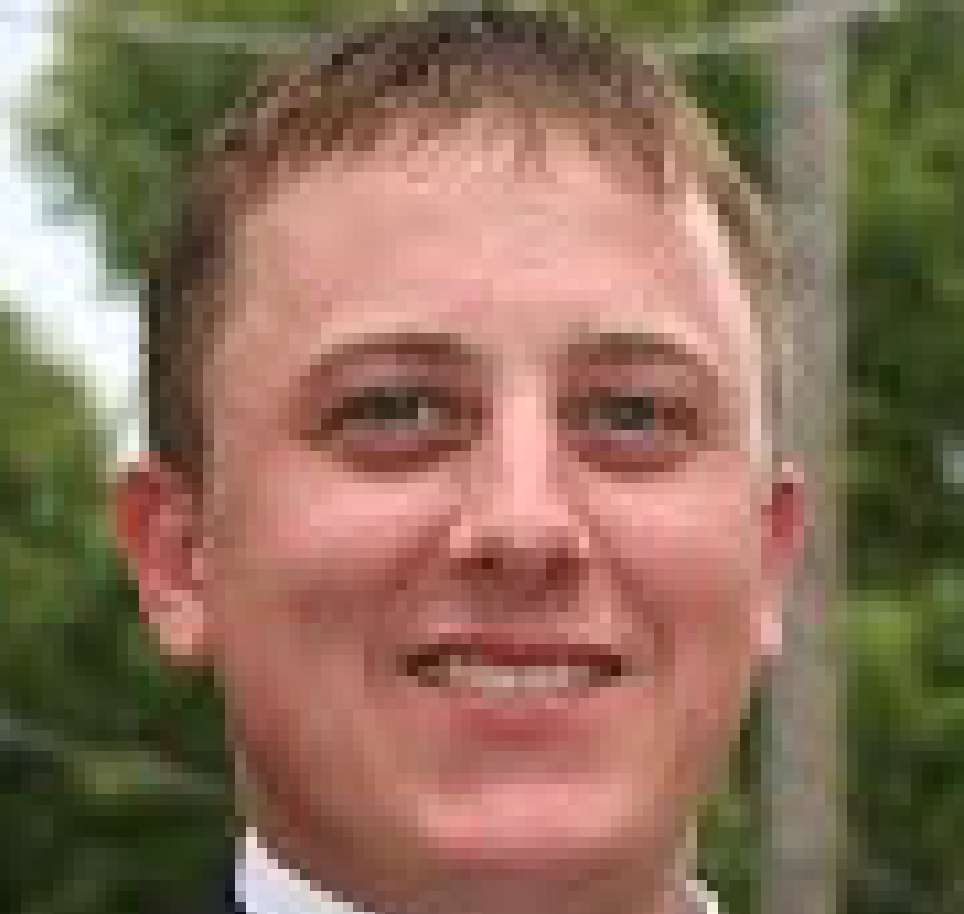
Bill Brab,
AST
Unlocking the Secrets of Fractured Bedrock Injection
- Bio |
- Abstract
- | Presentation
Bill Brab
Bill Brab is a Senior Remediation Geologist at AST Environmental, Inc. with over 18 years of experience in environmental geology and remediation. He started working for AST in 2011 and has developed AST to become a leading in-situ technology company, providing a unique injection approach involving high resolution sampling, detailed conceptual site models, intricate designs, and injection techniques. Mr. Brab graduated from the University of Kentucky in 2001 with a Bachelor of Science in Geology and holds Professional Geologist licenses in Kentucky, Tennessee, and Alabama.
Unlocking the Secrets of Fractured Bedrock Injection
This presentation will focus on the injection of slurries into fractured bedrock. Many fractured bedrock sites do not achieve cleanup goals on time or within budget because conventional techniques and technologies are dated and inefficient. Understanding the geologic controls of a site, selecting the proper reagent, loadings, and volumes, and achieving distribution in the subsurface are the keys to solving contaminated fractured rock sites. A key to bedrock remediation is to not treat just the highly transmissive zones, but also lower transmissive zones and zones of residual contaminant storage. A combination of custom narrow-interval packers (18 inch/45.75 cm) and a unique bedrock injection unit (flow rate up to 950 liters per minute and pressure up to 3,000 psi/205 bar) allows focused treatment using high energy access to the smaller aperture fracture networks which typically contain more contaminant mass than more transmissive features. Being able to isolate and treat these zones is a key component to success at difficult fractured bedrock sites. The equipment, processes, and a project summary will be discussed.
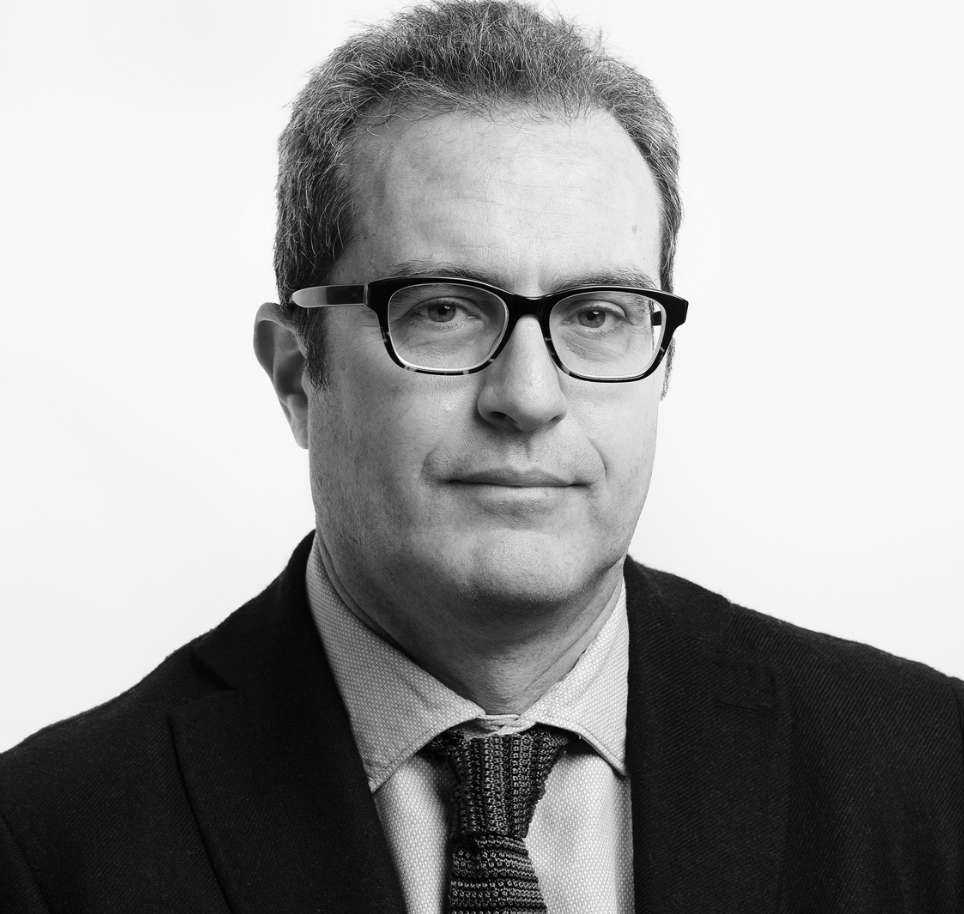
Vito Schifano,
30 Forensic Engineering
In-Situ Soil Reagent Mixing Technologies for Integrated Remediation and Restoration of Contaminated Sites
- Bio |
- Abstract
- | Presentation
Vito Schifano
Dr. Vito Schifano is the Practice Lead of the Geotechnical and Mining Group at 30 Forensic Engineering. Dr. Schifano possess 25 years of combined experience in research, teaching, consulting, design and construction management, and forensic geotechnical engineering. He has extensive experience in national and international projects in the manufacturing, oil & gas, mining, power and infrastructure sectors, from the planning stage, through detailed design and construction, and into operations and closure. His technical area of practice is in the geotechnical engineering of soft soils and ground technologies to the remediation, stabilization, closure, restoration and redevelopment of waste sites (mine tailings, acid tars, refinery sludge, coal ash, sediments), contaminated land, brownfields and waterfront sites, roads and railways, dams, and embankments. He has led technical, business and client development initiatives through knowledge-based services for multi-national engineering firms in the area of integrated remediation and revitalization of marginal and contaminated sites. He also participates in professional committees (DFI-Soil Mixing and ASCE Geoenvironmental) and networks (Sednet, S/S Technology Network), internal and external knowledge sharing initiatives, and applied research collaborations with academic institutions.
In-Situ Soil Reagent Mixing Technologies for Integrated Remediation and Restoration of Contaminated Sites
The problem of polluted sites in Canada, including brownfields, waterfront sediments and waste impoundments, is very urgent due to the environmental risk associated with these sites and the increasing demand for urban and waterfront land regeneration due to socioeconomic issues such as population growth, cities expansion and change in land use. Most of these polluted sites have multiple levels of complexities including the presence of heterogeneous mixtures of natural soils and industrial by-product materials with complex properties and mixtures of contaminants, including hydrocarbons and heavy metals and complex hydrological and hydrogeological settings. In addition, some sites are very large and contain millions of tons of polluted, soft materials, which require improvement of both geotechnical and environmental properties. Addressing these complexities in land regeneration is technically and economically challenging. Feasible solutions require innovative technical approaches and integration of project objectives in terms of remediation, restoration and regeneration of the land. Innovative applications of in-situ soil reagent mixing technologies allow simultaneous improvement of the environmental and geotechnical properties of treated materials and treatment of mixed contaminants in a variety of geological and hydrogeological settings. Case histories will be presented to illustrate applications of such technologies including innovative approaches relying on simultaneous introduction of oxidizing agents and binders to couple the contaminant mass-reduction remedial mechanisms of chemical oxidation with leaching control mechanisms and geotechnical improvement of the treated materials that allow an immediate reuse of the site.
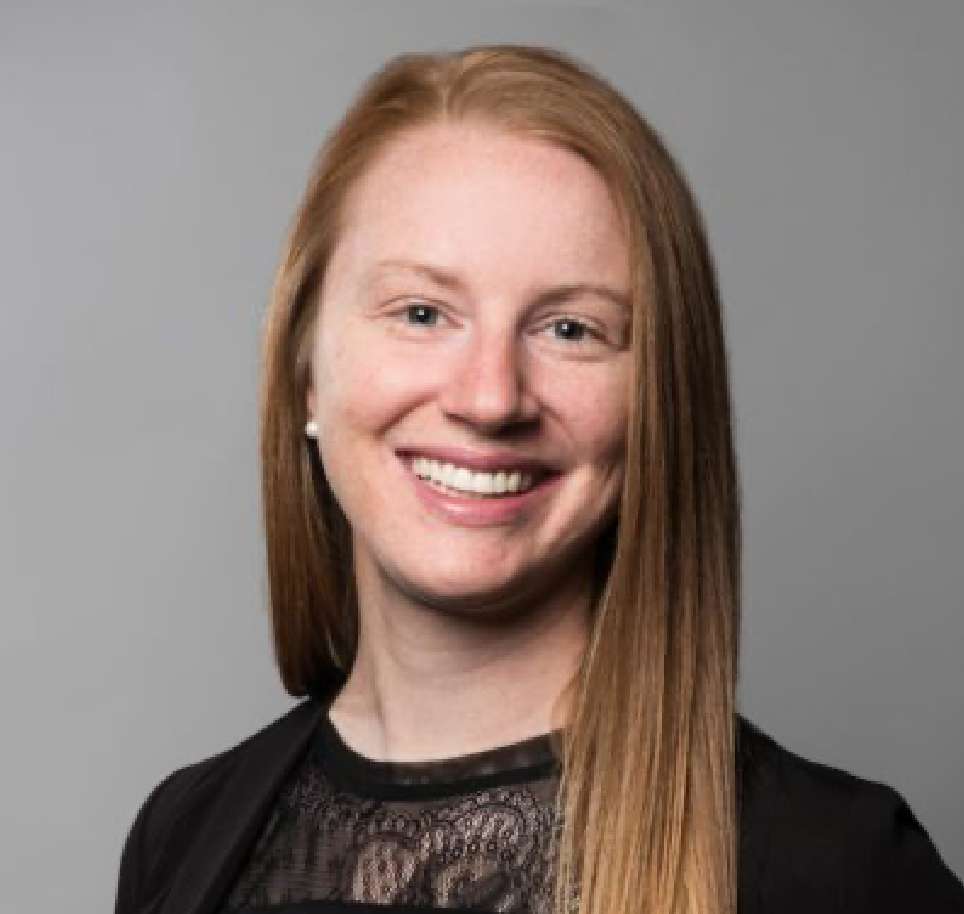
Laura Kinsman,
Savron Solutions
STAR and STARx – Smoldering Remediation of PFAS-Contaminated Soils
- Bio |
- Abstract
- | Presentation
Laura Kinsman
Laura Kinsman, M.E.Sc., is a Professional at Savron. She completed her M.E.Sc. studies at the University of Western Ontario under the direction of Dr. Jason Gerhard and Dr. Jose Torero – co-inventors of the STAR technology. Ms. Kinsman joined Savron in 2014 and has been actively involved in system design, field operations, and project management at sites across North America and Asia, including pilot testing and full-scale applications of both in situ and ex situ smoldering remediation.
STAR and STARx – Smoldering Remediation of PFAS-Contaminated Soils
Smoldering combustion is a low-cost, energy efficient thermal technique for the treatment of contaminated soils. This approach is commercially available as the STAR (in situ) and STARx (ex-situ) technologies and has traditionally been used for the treatment of heavy hydrocarbons. For these contaminants, the smoldering reaction propagates in a self-sustaining manner following a short duration, low energy input ‘ignition event’ as the energy released from the reacting contaminants is used to pre-heat and combust contaminants in adjacent areas, provided that a sufficient flux of air is supplied. PFAS are not contaminants that can support self-sustained smoldering combustion in and of themselves, and their high thermal stability requires temperatures at or above 900°C to maximize complete destruction to hydrofluoric acid (HF). Therefore, a surrogate fuel is required to facilitate smoldering remediation. A study conducted under the US Department of Defense (DoD) Strategic Environmental Research Program (SERDP) explored the use of granular activated carbon (GAC) as a surrogate fuel source since it is often a by-product of water treatment and can contain PFAS. Tests completed to date have demonstrated that relatively low concentrations of GAC will achieve smoldering temperatures in excess of 1000°C. Post-treatment concentrations of PFAS in the remaining sand, soil, and ash were below detection limits (0.05 µg/kg). Initial emissions analysis indicated the release of fluorine as HF, with trace amounts of shorter-chain PFAS which could be subsequently captured by vapour-phase GAC and treated. A second SERDP study is currently underway to refine the fluorine mass balance and investigate parameters that can be modified to further enhance PFAS destruction. In addition, large scale lab experiments and a field pilot test are scheduled for early 2021 to explore the impacts of scale and heterogeneity on PFAS destruction. Results to date are promising, suggesting STAR / STARx may provide an effective remediation technique for PFAS-impacted soils.

Marc McAree,
Willms & Shier Environmental Lawyers LLP
Your Credibility is on the Line: Examining your Role as an Expert Witness
- Bio |
- Abstract
- | Presentation
Marc McAree
Marc assists clients to manage environmental risks and liabilities while limiting clients’ reputational risk. Marc brings significant environmental law expertise to: contaminated land/brownfields clean ups, environmental-aspects of transactions, environmental insurance, all manner of environmental compliance, environmental approval and order appeals, and defence of environmental prosecutions and environmental civil actions. Marc is recognized for his excellence in advocating for clients in environmental civil litigation at all levels of Ontario Courts, defence of clients against environmental regulatory prosecutions, and appearances before Ontario’s Environmental Review Tribunal and other administrative decision-makers on appeals and at hearings. Marc has particular experience prosecuting and defending contaminated land claims and nuisance impacts including odour, noise and light, and also in defending civil actions brought against environmental consultants. Marc is named in the 2021 Lexpert™®/American Lawyer Guide To The Leading 500 Lawyers in Canada. Marc was peer selected and named the Best Lawyers’® 2019 Environmental Lawyer of the Year (Toronto). He is peer selected annually for inclusion in The Best Lawyers in Canada© for environmental law. Marc is ranked “Most Frequently Recommended” by The Canadian Legal Lexpert® directory and ranked “AV® Preeminent™” by peers in Martindale-Hubbell. He is ranked as a Global Leader in Who’s Who Legal Environment and ranked as a National Leader in Who’s Who Legal Canada Environment. Marc is called to the bar in Ontario and British Columbia. He obtained a joint Bachelor of Laws/Masters in Environmental Studies at York University. Willms & Shier Environmental Lawyers LLP is named “Law Firm of the Year” for Environmental Law in the Best Lawyers in Canada, 2021 Edition!
Your Credibility is on the Line: Examining your Role as an Expert Witness
Environmental consultants work at the unique intersection of environmental science and liability. Consultants are facing greater scrutiny in the work they do for clients; scrutiny comes from both the consultant’s clients and from regulators. Consultants are being sued in civil lawsuits for negligence and breach of contract. Consultants are being prosecuted for environmental statutory offences. Professional bodies have also become more active in responding to complaints against professionals and in reviewing professional misconduct. Because of this, you might be wondering whether you could be sued or prosecuted and how to mitigate your own risk of getting entangled in legal proceedings! Willms & Shier Environmental Lawyers will provide guidance for consultants on how best to manage their own exposure to liability that flows from the work that consultants do. During this session, our lawyers will review with you the basics about environmental legal issues facing consultants, including civil causes of action, environmental regulatory offences, and professional obligations. We will also delve into the most notable flash points that our firm’s lawyers see in our practice and through court, tribunal and disciplinary proceedings.

Nathan Lichti,
Vertex Environmental Inc.
A Treatment Plant in Your Building Basement? The Evolution of Groundwater Treatment for New Constructions
- Bio |
- Abstract
- | Presentation
Nathan Lichti
Mr. Lichti is an Environmental Engineer at Vertex Environmental Inc., and has designed and implemented more than 150 remediation projects over the past decade for groundwater treatment across Canada. Mr. Lichti holds a Bachelor’s degree in Engineering from the University of Waterloo, and is a Professional Engineer in Ontario.
A Treatment Plant in Your Building Basement? The Evolution of Groundwater Treatment for New Constructions
In the not so distant past, groundwater and stormwater accumulation were viewed as a natural part of any construction site, and they were pumped down the nearest storm sewer without a second thought. However, the times have been changing as municipalities introduce more stringent analytical testing and metering requirements, and eliminate nuisance water exceptions. On many new construction projects, analytical testing has identified a slew of concerns with naturally occurring metals, such as manganese, as well as construction related products such as de-icers and petroleum hydrocarbons. As a result, groundwater testing and treatment has moved from an afterthought, to a critical design component that starts long before yellow iron breaks ground, and often continues throughout the lifespan of the new building. This talk will showcase recent changes in groundwater treatment requirements for new constructions, starting with upfront design considerations, evaluation of treatment discharge options, as well as the installation of permanent groundwater treatment plants in building basements. The talk will draw on examples from GTA construction sites to provide lessons learned for handling groundwater treatment in this time of evolving practices.
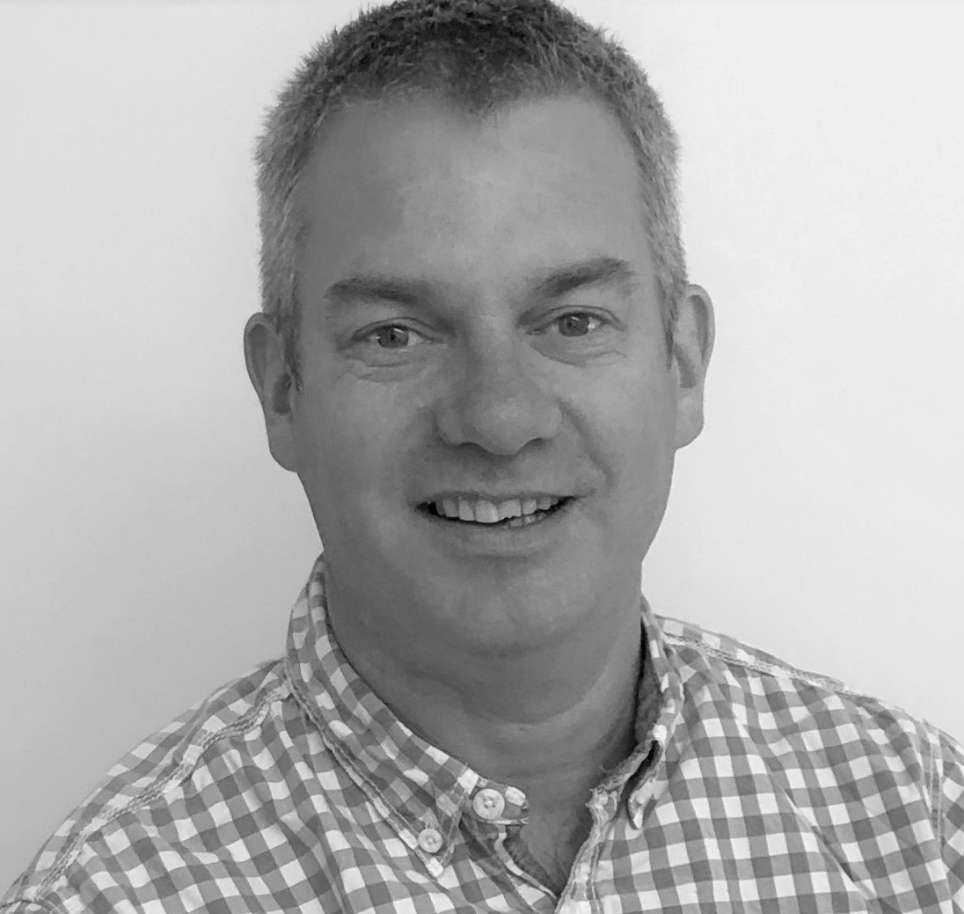
Ric Horobin,
SLR Consulting & Government of Yukon
CO-PRESENTING: Remediation of the Marwell Tar Pit, Whitehorse, Yukon
- Bio |
- Abstract
- | Presentation
Ric Horobin
Dr Horobin is a Principal Hydrogeologist with >25 years postgraduate experience in groundwater science. He is based in Whitehorse, YT, and is SLR’s Northern Operations Manager. He has worked on a range of projects including the clean-up of a placer mine near Lake Laberge, ground and groundwater contamination at Swift River, the Marwell Tar Pits remediation, and a water supply assessment for the RCMP across the Prairies. He is currently leading the team advising the Yukon Water Board on the water licence application for the Kudz Ze Kayah mine in eastern Yukon.
CO-PRESENTING: Remediation of the Marwell Tar Pit, Whitehorse, Yukon
The Marwell Tar Pit site in the industrial area of central Whitehorse, Yukon, contained approximately 30,000 m3 of hydrocarbon contaminated soil largely consisting of tar remaining from a historical oil refinery which operated for a short time in the 1940s. Investigations carried out in the 1990s and 2000s identified the likely extent of the contamination. In 2010, the Governments of Canada and Yukon signed an agreement to jointly fund the assessment and remediation of the tar pit site. Federal funding came from the Federal Contaminated Sites Action Plan and the Northern Strategy, with territorial funding through the Environmental Liabilities and Remediation Program. As a result of the agreement, further environmental investigations were carried out to design the remediation works and restoration strategy required to meet that strategy. A small portion of the tar pit is located beneath a road and at depth, so rather than remediation to numerical standards, a risk-based restoration strategy was designed. Several soil remediation methods were assessed including removal, stabilization and ex-situ bioremediation, but onsite thermal desorption was selected based on several factors including technical feasibility, reliability, public and regulator acceptance, ongoing liability and cost. Remediation works started in 2018 and continued through to the end of 2019. Human Health and Ecological Risk Assessment completed in 2015 set site-specific remediation targets to protect both current and future workers/visitors to the site and the ecology of the site and surrounding area. The presentation will summarise the project background and set out the main issues that had to be overcome through the application of the remediation technology and its use in northern Canada. One aspect of this includes significant concerns from the local population about the impact on air quality both before and during the restoration works. Odours emanating from the site had been identified as a concern by local residents and even though the risk assessment identified negligible risk to human health to visitors to the site and local residents, these concerns were considered and addressed during the works. Dr Horobin will present an overview of the project including the history of the site and the work carried out since the 1940s to attempt to stabilise the tar pit. He will summarise the findings of the various phases of ground investigation carried out and the subsequent risk assessment findings that were used to determine the remediation targets. He will also explain some of the practical challenges that had to be overcome during the works given the location in Yukon. Mr Inglis will explain the nature of the concerns around air quality and how these were addressed during the works. He will discuss the air quality monitoring carried out during the project and how the findings from that were used to address the concerns of the local population.

Paul Inglis,
SLR Consulting & Government of Yukon
CO-PRESENTING: Remediation of the Marwell Tar Pit, Whitehorse, Yukon
- Bio |
- Abstract
- | Presentation
Paul Inglis
Paul Inglis is the Manager of the Site Assessment and Remediation Unit at Environment Yukon and has worked in the abandoned mine and contaminated sites assessment and remediation fields in the Yukon for 16 years. He spent the first 11 years in consulting and the past 5 in government. In government, he spent three years working as a project manager. He has been the Manager of SARU for the past two years.
CO-PRESENTING: Remediation of the Marwell Tar Pit, Whitehorse, Yukon
The Marwell Tar Pit site in the industrial area of central Whitehorse, Yukon, contained approximately 30,000 m3 of hydrocarbon contaminated soil largely consisting of tar remaining from a historical oil refinery which operated for a short time in the 1940s. Investigations carried out in the 1990s and 2000s identified the likely extent of the contamination. In 2010, the Governments of Canada and Yukon signed an agreement to jointly fund the assessment and remediation of the tar pit site. Federal funding came from the Federal Contaminated Sites Action Plan and the Northern Strategy, with territorial funding through the Environmental Liabilities and Remediation Program. As a result of the agreement, further environmental investigations were carried out to design the remediation works and restoration strategy required to meet that strategy. A small portion of the tar pit is located beneath a road and at depth, so rather than remediation to numerical standards, a risk-based restoration strategy was designed. Several soil remediation methods were assessed including removal, stabilization and ex-situ bioremediation, but onsite thermal desorption was selected based on several factors including technical feasibility, reliability, public and regulator acceptance, ongoing liability and cost. Remediation works started in 2018 and continued through to the end of 2019. Human Health and Ecological Risk Assessment completed in 2015 set site-specific remediation targets to protect both current and future workers/visitors to the site and the ecology of the site and surrounding area. The presentation will summarise the project background and set out the main issues that had to be overcome through the application of the remediation technology and its use in northern Canada. One aspect of this includes significant concerns from the local population about the impact on air quality both before and during the restoration works. Odours emanating from the site had been identified as a concern by local residents and even though the risk assessment identified negligible risk to human health to visitors to the site and local residents, these concerns were considered and addressed during the works. Dr Horobin will present an overview of the project including the history of the site and the work carried out since the 1940s to attempt to stabilise the tar pit. He will summarise the findings of the various phases of ground investigation carried out and the subsequent risk assessment findings that were used to determine the remediation targets. He will also explain some of the practical challenges that had to be overcome during the works given the location in Yukon. Mr Inglis will explain the nature of the concerns around air quality and how these were addressed during the works. He will discuss the air quality monitoring carried out during the project and how the findings from that were used to address the concerns of the local population.
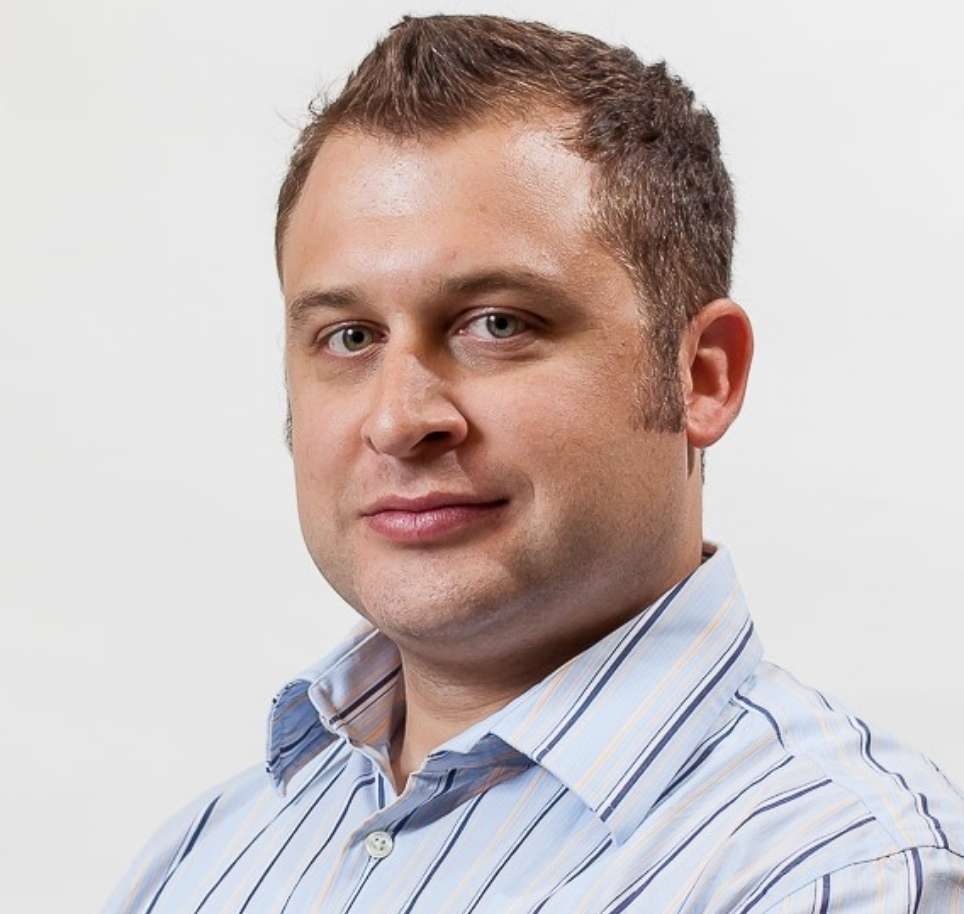
Brent Pautler,
SiREM
Advantages of Passive Sampling as a Decision-Making Tool and its Application to Contaminated Groundwater Upwelling
- Bio |
- Abstract
- | Presentation
Brent Pautler
Brent Pautler received his Ph.D in Environmental Chemistry from the University of Toronto with a focus on developing novel analytical chemistry methods/proxies for characterization and quantification of natural organic matter in the cryosphere to better understand its biogeochemical cycling and past climate. Brent is the Customer Service Coordinator at SiREM with over 5 years of customer facing experience using his technical chemistry expertise to support sales, marketing, training and data interpretation for a wide variety of applications to help scientists achieve their desired goals. Part of his role at SiREM includes project management and business development of SiREM’s passive sampling offering including the Waterloo Membrane SamplerTM (WMSTM) for monitoring VOC vapor concentrations, SP3TM for hydrophobic organic analytes and SPeepersTM for metals/inorganics in sediment pore and surface waters.
Advantages of Passive Sampling as a Decision-Making Tool and its Application to Contaminated Groundwater Upwelling
Passive sampling devices (PSDs) present many advantages over conventional sampling methods for quantifying the availability of hydrophobic organic compounds (HOC) and inorganic compounds in sediment, soil, surface water and storm water in terms of cost and data quality. PSDs provide data to estimate contaminant bioavailability and toxicity to environmental receptors that are more accurate than conventional grab or mechanically extracted samples, as PSDs quantify freely dissolved contaminant concentrations (Cfree) as opposed to total mass including sorbed fractions. Measuring only bioavailable contaminants with PSDs provides a better measure of actual toxicity and mobility for environmental receptors and decreases toxicity overestimation compared to conventional sampling methods (e.g., core collection, porewater extraction). PSDs have been used in the laboratory and the field for decision making in site investigation and remediation, including techniques and advancements that simplify and improve ease of sampling, increase data quality and lower costs. PSDs can be deployed directly in-situ to capture the influence of groundwater flux, changes in field conditions and the heterogeneity of a site on the freely dissolved concentrations of the compounds of interest. In a recent case study, PSDs were used to assess groundwater upwelling of parent and alkylated polycyclic aromatic hydrocarbons (PAH) concentrations in sediments and surface water at a site adjacent to a former wood preserving facility. The use of Cfree results indicated distinguishable groundwater discharge zones at the site, and that if corrective action were required for the sediments, it would be of limited spatial extent reducing remediation costs. This case study, in addition to abundant laboratory data, illustrates how good site management practices and efficiencies can be realized by using passive sampling at contaminated sediment sites.